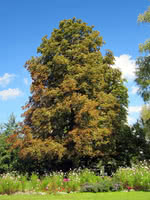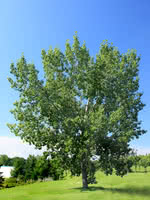Mon-Fri 9am - 5pm Mountain time
Balsam Poplar vs Horse Chestnut
Aesculus hippocastanum
Populus balsamifera
CUSTOM GROW
Horse Chestnut is a medium sized deciduous tree that is native to Greece but has been grown in North America for hundreds of years. It produces large nuts.
A top CO2 absorbing species. Experts think this tree may help climate change more than others.
Balsam Poplar is a hardy, fast-growing deciduous tree that is Native to Canada east of the Rockies.
We grow them in two variations. Sometimes they are a male clones, so they don't produce fluff. Other times, we grow them from seed, which will result in fluff. The detailed descriptions (see below) will tell you which is which.
Horse Chestnut Quick Facts
Balsam Poplar Quick Facts
Toxicity: most parts of plant are toxic
In row spacing: 2.4 - 3 m (8 - 10 ft)

